Lucy Timbrell is a PhD researcher at the University of Liverpool. She received a Leakey Foundation research grant in 2020 for her project entitled “Movement, interaction and structure: modelling population networks and diversity in the African Middle Stone Age.”
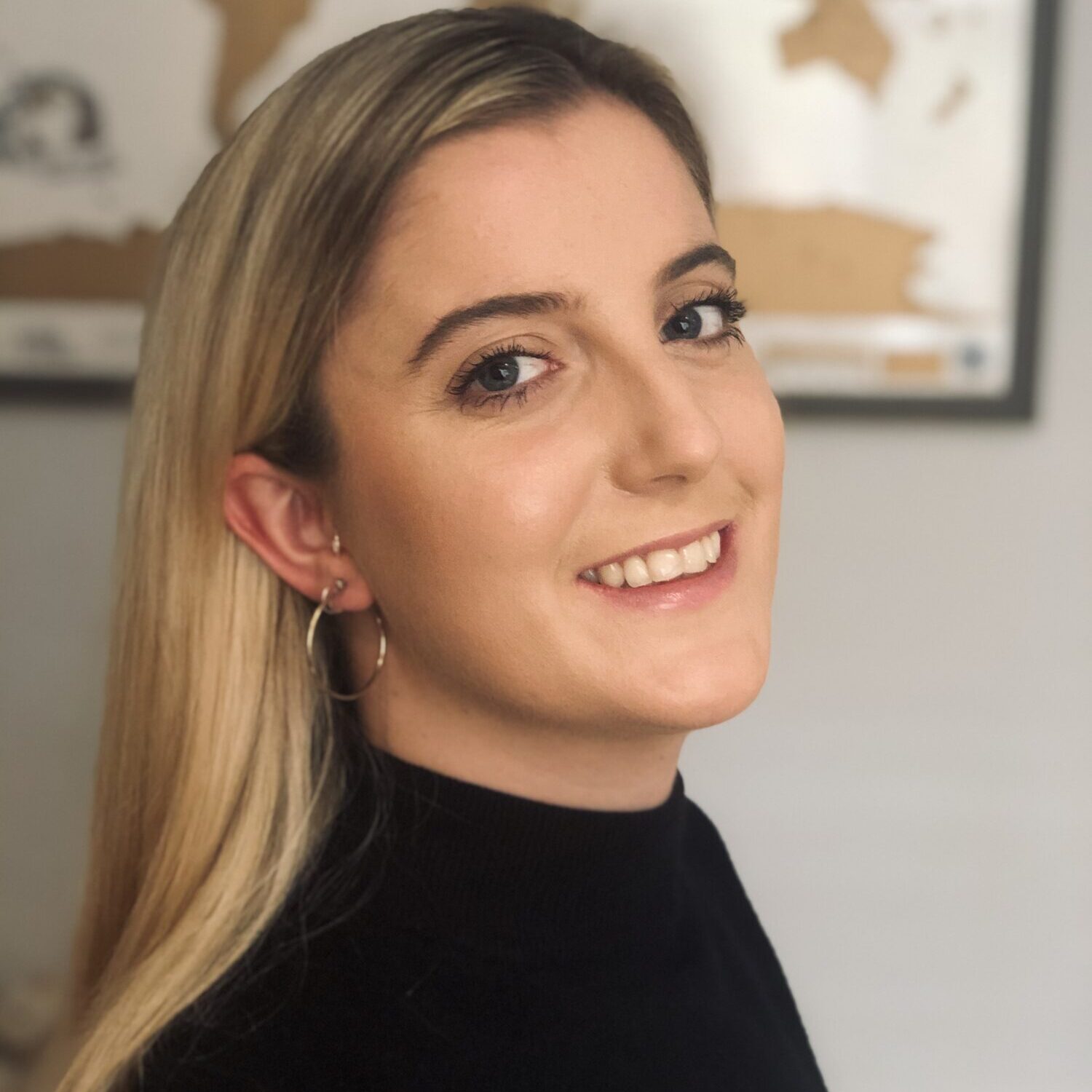
Were you one of those kids who was interested in science from an early age?
I have always been fascinated by science. It first started in primary school when I convinced myself that I wanted to be a doctor. I would stay up all night and memorize books about the human body from our school’s small library – which annoyed my little sister endlessly, as we shared a bedroom at the time! It wasn’t until I realized that you actually had to deal with some pretty unpleasant stuff that I quickly went off the idea of becoming a doctor. But that interest in human biology was always there. Subconsciously, I’ve also always been interested in human history, although as a child I was never really aware that prehistory was a thing. I used to have a subscription to the ‘Horrible Histories’ magazines and enjoyed learning about different periods like the Egyptians, Victorians etc. When I got a bit older, I read all of The Roman Mysteries books by Caroline Lawrence, leading me to choose Latin and History as some of my optional GCSE’s…So, I guess the foundations were always there for my interest in human evolution – I just didn’t know it!
However, I only stumbled upon human evolution studies by accident. I was actually looking at online prospectus’ for undergraduate courses in Law when I randomly came across “BSc Evolutionary Anthropology” at the University of Liverpool – I didn’t really know what it was, but it sounded interesting! I did some digging and after a while I knew that it was the perfect course for me. I applied for the EvoAnth course at Liverpool, got in, and the rest is history!
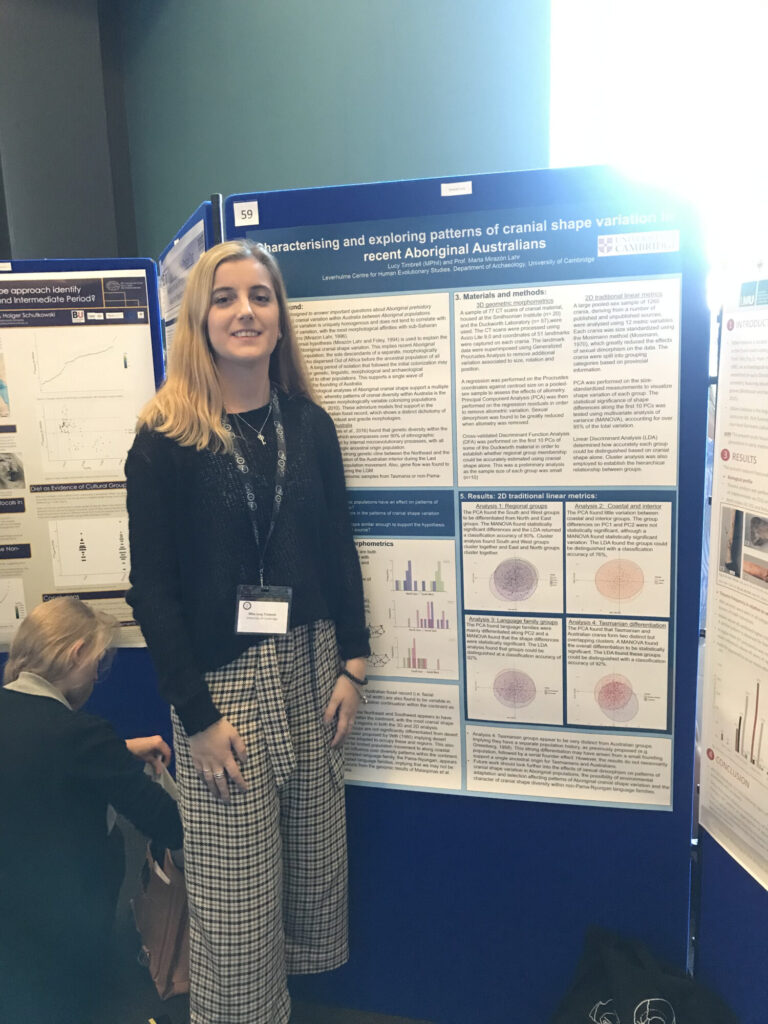
How did you become interested in your current field?
As an EvoAnth undergraduate, I learnt about all aspects of hominin evolution and I became familiarised with new concepts, theories and ideas that were all pretty alien to me before. I quickly developed an interest in the more recent phases of human time – the evolution of our own species and the processes that shaped our biological and cultural diversity today. For my thesis, I decided that I wanted to look at modern human morphological diversity in some capacity, as I had enjoyed human osteology classes the most out of all of the modules I had taken, so I contacted my advisor, Dr Kimberly Plomp, who helped me put together a project. I investigated whether a small part of the human skull (specifically the basicranial portion of the temporal bone) could be used to differentiate between two British populations using geometric morphometrics, a suite of complex shape analysis techniques, which Kim taught me. Going into my MPhil at the University of Cambridge, I expanded my experience and understanding of this technique, as well as used more traditional metric analyses, to look at how morphological variability in Aboriginal Australian populations relates to hypotheses about the demographic history of the continent.
Both of these projects made me really interested in how the morphological diversity of modern populations can inform us about past events. During my MPhil, I had read about a new structured metapopulations model put forward by Eleanor Scerri and colleagues for the evolution of Homo sapiens in Africa and I found it very interesting in terms of the implications this would have for modern human diversity in both the past and the present. I saw that one of my undergraduate lecturers, Dr Matt Grove, was a co-author on this paper so I contacted him and we designed my PhD project around these new ideas about modern human origins. The project applies my previous methodological expertise in geometric morphometric techniques to these questions about modern human origins in Africa, throwing in some other fun things like GIS and climate modeling!
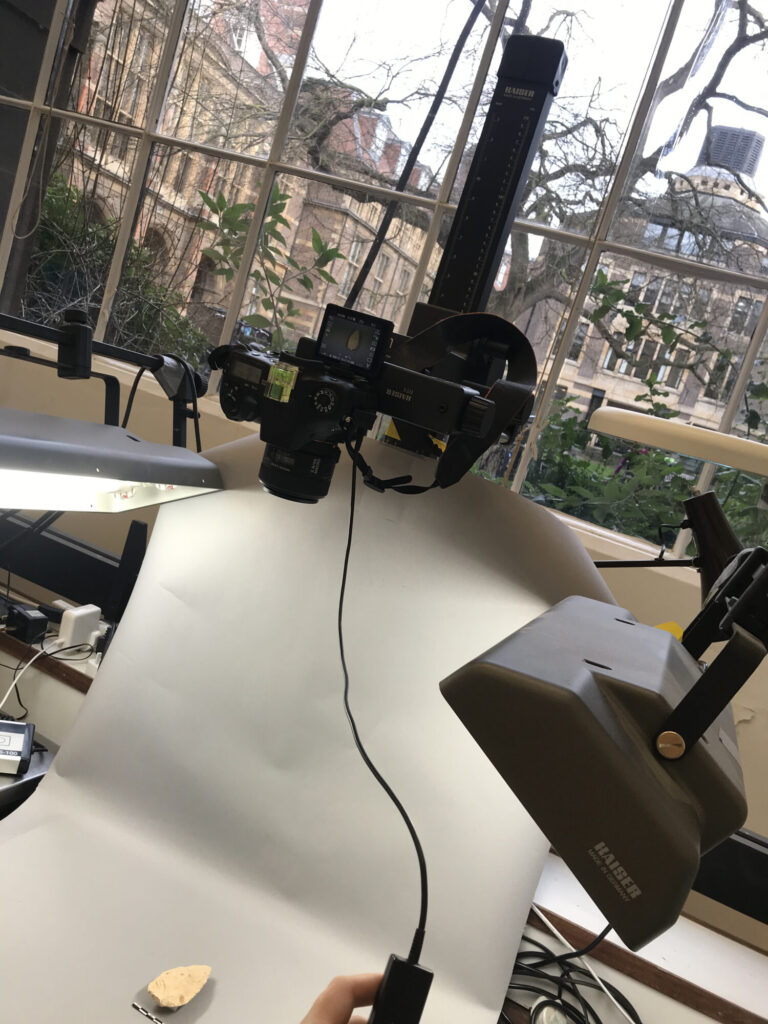
Can you tell us about your Leakey Foundation-supported research?
My project funded by the Leakey Foundation forms part of my PhD research at the University of Liverpool. Overall, this project is focussed on modelling population structure in the African Middle Stone Age, the cultural phase associated with the first modern humans. The first part of the research has involved building a spatiotemporally explicit model with collaborators from the University of Cambridge and the Max Planck Institute for the Science of Human History which maps the climatic conditions suitable for human habitation throughout the Middle Stone Age. I am using Geographic Information Systems (GIS) and cost-path approaches to model how Middle Stone Age populations would have moved through topographically complex landscapes, taking into account factors like access to fresh water and other environmental obstacles. Overall, this model predicts how habitable zones coalesced and fragmented through time and space, sporadically connecting and isolating populations by facilitating migration through corridors of habitable conditions.
The next phase of my PhD involves testing the predictions of habitability-driven population interactions with archaeological data. I aim to collect shape data from Middle Stone Age projectile points, as they are generally considered to be indicative of inter-group contact during the Middle Stone Age. Ethnographically, similarities in point styles often reflect shared cultural behaviours between interacting individuals, as they are used in exchange contexts as well functionally as projectile tips. My study will try to understand whether similarities in point styles between Middle Stone Age sites could reflect structured networks of interactions, as predicted by our environmental model.
The funds provided by the Leakey Foundation will allow me to travel to a number of museum institutions in sub-Saharan Africa to collect 3D and 2D data from Middle Stone Age projectile points. Specifically, I will create 3D models of the points using a structured light scanner and taking standardised 2D photographs. The shape variation of these points will then be investigated by subjecting these models and photographs to 3D and 2D geometric morphometric analyses.
How did you feel when you learned you had been awarded a Leakey Foundation grant?
I felt absolutely over the moon – I couldn’t believe it! The Leakey Foundation is a world-renowned institution for human evolution research, so to know that my project is worthy of being supported by them is really a dream come true. I am so excited that this funding will allow me to visit the countries whose history I am studying, meet with local collaborators and gain first-hand experience with some of these amazing collections that I have read so much about. I just can’t wait to do the research now, once it is safe to do so with the pandemic.
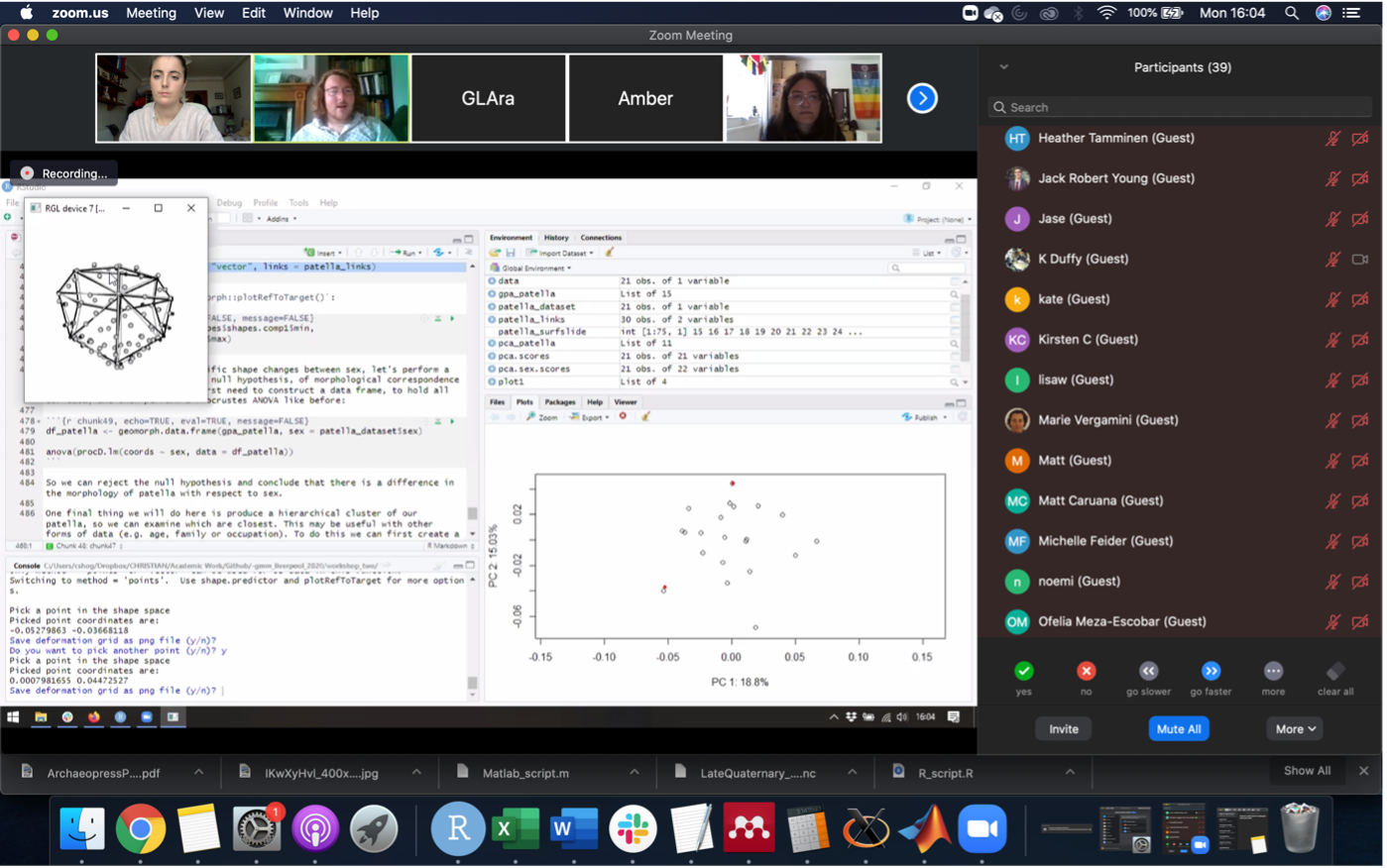
What do you find most exciting about your current work?
My work excites me in so many ways, Firstly, this research aims to contribute to new knowledge about how early modern populations were structured across the landscape, building on previous work done to understand our species’ origins.
Also, through this research I hope to help establish null models for deciphering structure in archaeological data. In genetic studies, isolation by distance, time and environment are routinely used as null models when identifying discontinuities in gene flow. These suggest that more similarities should occur between populations at closer distances and times as they are more likely to be interacting than those at further distances. Similarity due to isolation by environment, however, likely reflects parallel adaptation to similar environments, or the expression of similar elements of a wide repertoire in response to those environments.
Whilst isolation by distance is beginning to be used more routinely in archaeological studies, we don’t really know that much about what the effects of space, time and environment on archaeological data looks like in theory, making it difficult to confidently distinguish culturally significant variation deriving from preferential interaction between populations. This is something I’m really excited to work on.
I’m also really looking forward to my data collection. Even though I have carried out two geometric morphometric projects before for my undergraduate and masters work, I have never had the opportunity to go out into the field and collect my own primary data. I can’t wait to be able to make them available for others to use, as has been previously be been done for me. I think there’s something really special in sharing your data with someone to help them answer questions that interest them.
What has challenged you most in the work you’re doing?
Without a doubt, the biggest challenge for me so far has been trying to navigate starting a research project during a pandemic, as I imagine it has been for a lot of people. Luckily, the first phase of my research can be done remotely, so in that aspect I have managed to make substantial progress. However, the ongoing uncertainty surrounding if, when and how I’ll be able to safely fly out and visit the museums for data collection has been, and continues to be, very stressful. But, the COVID19 pandemic has been an awful time for so many people, especially those who have lost someone close to them, so I feel fortunate that my research plans have really been the only thing that has been significantly affected. I have a few contingency proposals ready in case it continues to be unfeasible for me to carry out my research in situ, but we will just have to wait and see how the situation develops.
At the moment, my supervisors and I, along with some collaborators, are still working on refining our climatic modeling and cost path analyses. We’re working on establishing a method of building climatic profiles of our sample sites, as each date that has been generated has a different magnitude and type of associated error. I’ve also got a number of collaborative projects and papers which are ongoing, so I’m being kept very busy! Importantly, I’m also finalising my data collection protocols so that I am prepared for when I am able to go out into the field and do the next phase of the research.
Why should people care about human evolution?
I think that learning about human evolution feeds that inherent curiosity we all have about ourselves. Why do we look and act the way that we do? What is it that makes us so different to other species? How have we managed to dominate the world in the way that we have? By studying our own species history, we can get closer to answering these big questions. Something else important that human evolution teaches us is that, even though we are all so different, we all share the same origins story – a profound message for our divided society in the 21st century.
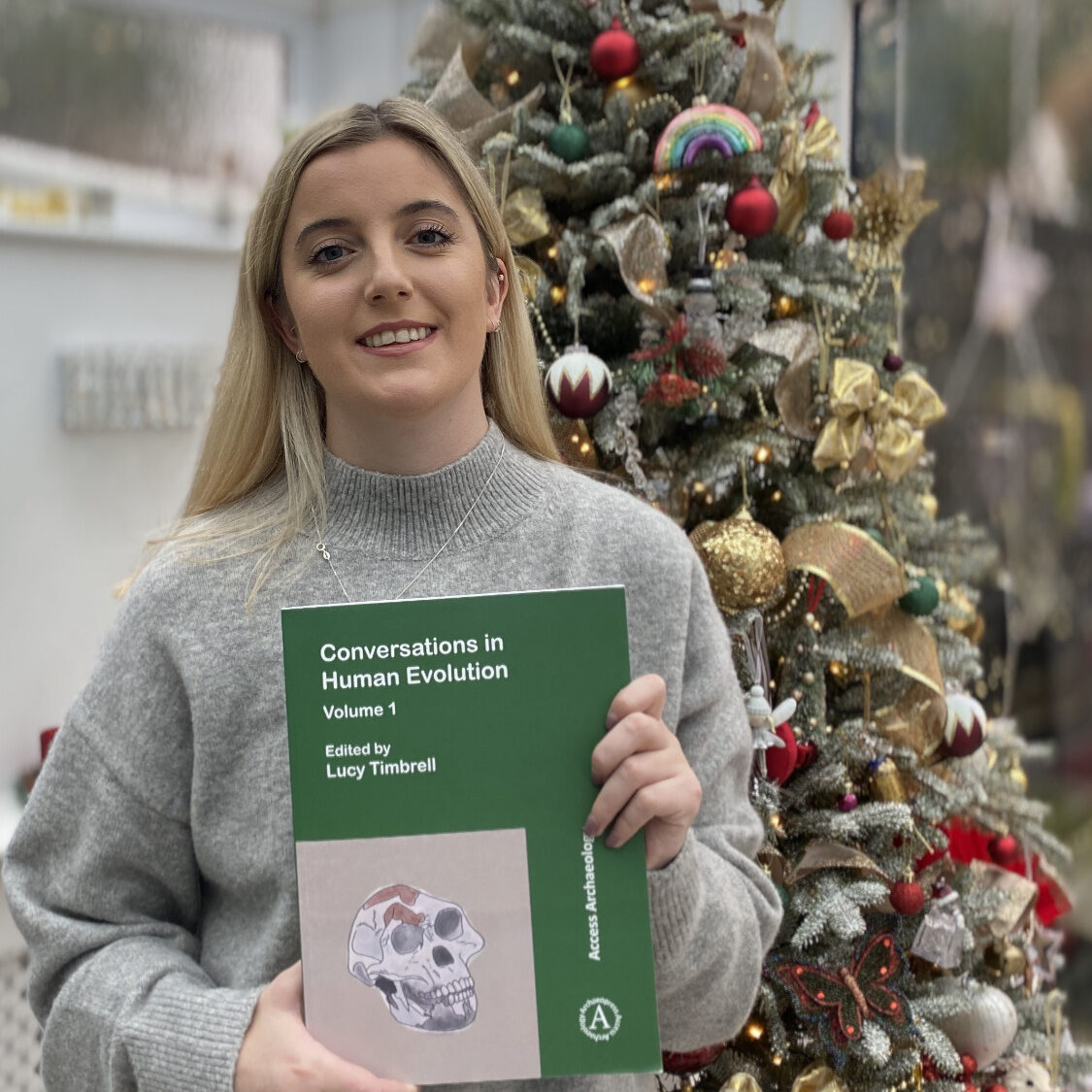
What can you tell us about your science communication projects?
I am the coordinator of the popular science communication project ‘Conversations in Human Evolution’ – a series of interviews much like this one with human evolution researchers from around the world. It has been really fun for me to be the interviewee here for you rather than the interviewer! It has been great to see how well this project has been received. Last year, Archaeopress agreed to publish the collection of interviews in their Access Archaeology series, so I put together the first volume of 20 interviews which has just be made available online and in print. I’m currently working on putting together Volume 2, which should be out later this year – so look out for that!
I also co-organise the Evolutionary Anthropology Webinar Series for the Department of Archaeology, Classics and Egyptology at the University of Liverpool. Each week we host speakers from all over the world to give talks on a wide range of topics in human evolution. We used to hold these events in person, but because of the pandemic we now hold them over Zoom which has been great because we can accomodate many more participants and we record the sessions for our YouTube channel. If anyone is interested in attending our series, you can email us at [email protected] or follow us on twitter @LivUni_EvoAnth
Finally, a group of fellow PhD students recently put together the NOPE network (NOrthern Palaeo and Evolutionary anthropology network) to connect students and researchers in northern UK universities during these unprecedented times of isolation and uncertainty. We hope this network has a lasting legacy, and that when we have finally got through the pandemic we can meet and connect in person. As part of this project, myself and the two other organisers put together a Google document listing some open sources of archaeological and anthropological data for PhD students who are struggling to collect the data they need for their doctoral research, which may also be of interest to some of the readers here .


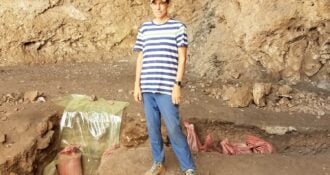
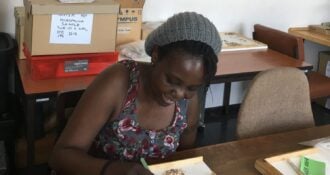
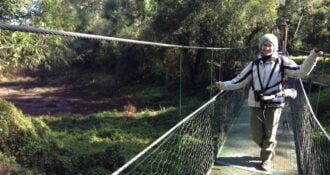

Comments 0